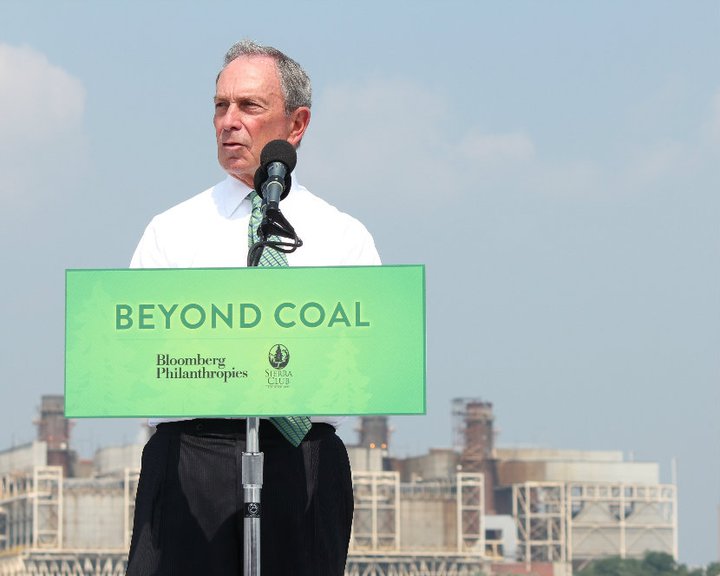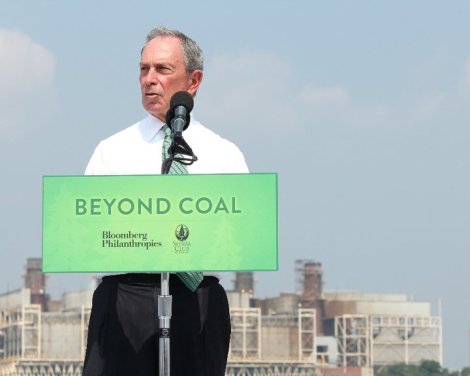This shit’s real.
That’s what Sandy told America this week. And that’s what New York Mayor Michael Bloomberg told us, more decorously, with his high-profile eleventh-hour endorsement of President Obama.
It has long looked like the 2012 election season would go down in history as the Election That Didn’t Talk About The Climate. This week, the planet stepped in and said, in no uncertain terms, that attention must be paid. Climate change isn’t a graph or a number; it’s a storm and a flood. It’s not in Greenland or Vanuatu; it’s in New York and New Jersey.
Neither candidate has exactly been itching to address this subject. Obama has been mostly climate-mum since 2009. Meanwhile, Mitt Romney has walked back from his carbon-cutting Massachusetts policies and embraced the current GOP orthodoxy, which is to mock anyone — including the president — who suggests taking the issue of the planet’s warming seriously.
Yet here comes Bloomberg — a former Democrat turned Republican turned independent who many thought might run for president himself on a third-party ticket — throwing his support behind Obama, citing climate as the proximate reason for his hop off the fence:
Our climate is changing. And while the increase in extreme weather we have experienced in New York City and around the world may or may not be the result of it, the risk that it may be — given the devastation it is wreaking — should be enough to compel all elected leaders to take immediate action. … One [candidate] sees climate change as an urgent problem that threatens our planet; one does not. I want our president to place scientific evidence and risk management above electoral politics.
The importance of Bloomberg’s move is twofold. First, as the headline on his endorsement reads, the mayor is voting “for a president to lead on climate change.” In other words, he’s not just saying, “Four more years.” He’s casting his vote less for the man than for climate-change leadership — something that Obama, however disappointing he has been to climate-hawk supporters, is more likely to deliver than his opponent.
Second, Bloomberg is one of the last inhabitants of U.S. politics’ mythical Land of the Centrists. As such, his insistence on the primacy of climate in picking a candidate carries less partisan spin and is harder for the Beltway punditocracy to discount. Denialists on the right aren’t going to be swayed, of course, but they’re going to have a much harder time dismissing Bloomberg than, say, Al Gore.
I don’t want to overstate the importance of the moment. This endorsement, though unexpected, was consistent with Bloomberg’s longstanding positions; he has been putting his voice and his cash into the climate fight for a long time. It doesn’t guarantee that Sandy will be remembered as a transformative moment of the public dialogue over climate change akin to, say, Walter Cronkite’s criticism of the Vietnam War effort.
But for those of us who’ve been waiting a long time for someone to shout “fire” in our overcrowded political theater, it’s a bracingly notable event. Now the challenge is to keep this conversation rolling.
Consciousness isn’t a finite resource, but if people don’t act on it, it can and will ebb away. It was only a handful of years ago that An Inconvenient Truth spread its do-something-about-the-climate gospel; that momentum petered out and is a distant memory today.
Sandy hit more of us harder, where we live. Those who experienced it are much more likely to understand that climate change is neither a hoax nor a movie but a fact and a crisis. Bloomberg’s endorsement added a line of bright highlighter yellow to this picture. It was politics, sure, but also, in its way, art.




